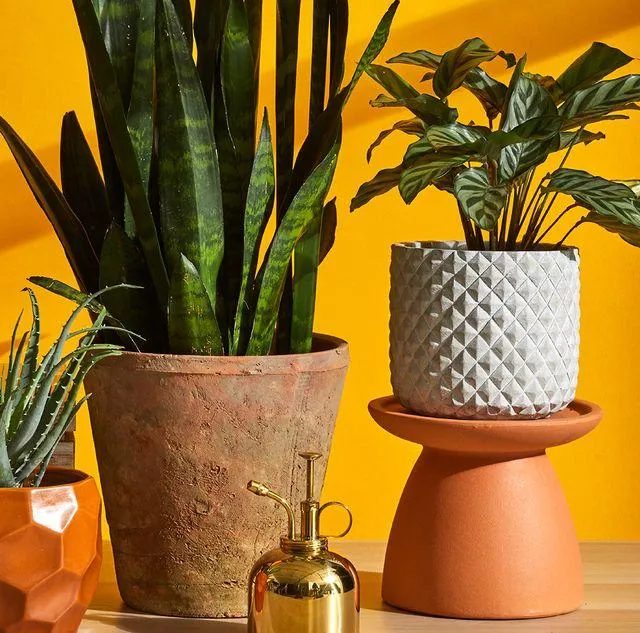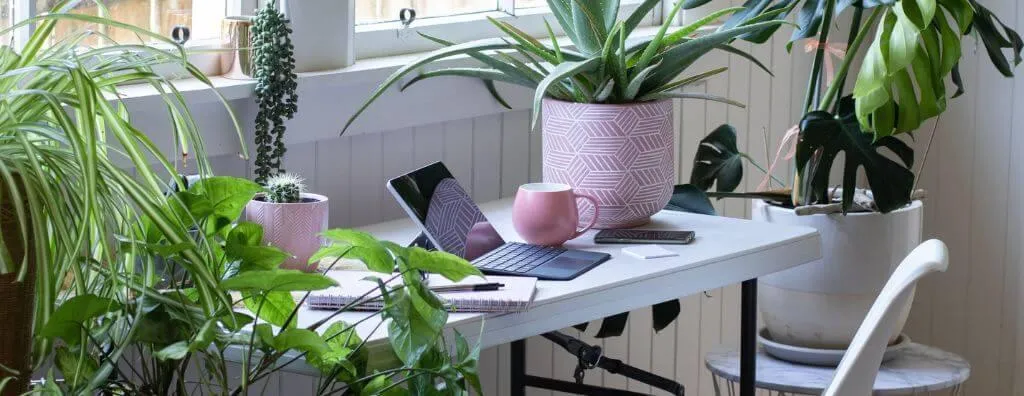The Best Plants for Your Home: A Complete Guide
Whether you’re looking to add some greenery to your living space or want plants that are easy to care for, indoor plants can provide numerous benefits. In this guide, I’ll go over some of the top plant options for interior spaces and answer common questions people have when selecting plants for inside their home.
Why Have Indoor Plants?
There are many wonderful reasons to incorporate plants into your interior design. From my experience as an avid plant parent, indoor greenery can help clean the air by removing toxins and increasing humidity levels. Several studies have found that plants may improve mood and reduce stress as well. Simply gazing at foliage has been shown to lower blood pressure and heart rate. Aesthetically, plants add visual interest and a sense of nature to urban living spaces. Strategically placed plants around a room can even make it feel bigger!
At the same time, plants require some care and maintenance. Before selecting plants for indoors, it’s important to evaluate the amount of light, water needs, and space available in your home. Choosing low-maintenance species that match your environment and lifestyle is key to keeping your indoor plants thriving long-term.
Low Light Plants vs. High Light Plants
One of the most important factors to consider is the light conditions where you plan to display your plants. Indoor spaces offer varying degrees of natural illumination, so it’s crucial to pick plants suited to the light levels. Here are some guidelines on light requirements:
- Low light plants: Ideal for areas further from windows like bathrooms or dense foliage that can survive on artificial light alone. Examples include snake plant, pothos, Chinese evergreen.
- Medium light plants: Thrive in indirect sunlight a few feet back from a window. Match for bright rooms or those receiving morning/afternoon sun. ZZ plant, peace lily, dracaena.
- High light plants: Prefer direct sunlight close to a sunny window. May need supplemental light in low-light seasons. Monstera, rubber plant, philodendron.
By understanding lighting conditions, you can select species that will be content without a lot of fussing over their care. Mix and match light preferences for varied plant arrangements throughout your home.
Beautiful, Low-Maintenance Choices
For homeowners seeking low-effort houseplants, some top stress-free selections worth considering include:

- Snake plant (Sansevieria trifasciata): Virtually indestructible and thrives on neglect. Filtered light and infrequent watering.
- Pothos (Epipremnum aureum): Hearty trailing vine. Willtrail attractively from shelves. Tolerates low light and drought.
- Spider plant (Chlorophytum comosum): Fast grower that produces offsets. Loves bright indirect light. Let dry slightly between waterings.
- ZZ plant (Zamioculcas zamiifolia): Thick succulent-like leaves and drought resistant. Low water needs. Survives on low to medium light.
- Chinese evergreen (Aglaonema): Gorgeous broad leaves in variegated patterns. Thrives as a low-light houseplant. Water when top inch of soil dries.
These are some of the most forgiving options for anyone new to plant parenting. They can handle infrequent watering and don’t mind being left alone. A little neglect won’t send them to an early grave!
Refresh a Room with Foliage
Once you’ve selected plants matching your conditions, it’s time to stylishly incorporate them into your décor. Large foliage like monstera or fiddle leaf fig can make a dramatic centerpiece. I’ve found that groupings of 3 or 5 same-species plants in varying pot sizes creates visual impact. For smaller spaces, consider mounting trailing plants in hanging baskets or placing tabletop plants in clusters. Don’t be afraid to get creative with plant displays! Shelves, hanging planters, and tiered stands maximize surface area for lots of greenery.
Keep in mind how plants might affect furniture placement too. Taller specimen plants ensure adequate airflow and prevent leaves from getting crushed. For safety, hang trailing plants where they won’t be accidentally yanked. Proper lighting is key, so test spotting plants in their final position for a week before committing. With some thoughtful arrangement, your plants can totally level-up a room!
Caring for Your Indoor Jungle
While the chosen species should be low-effort, some regular TLC keeps everyone looking their best. Water when the top soil becomes dry to the touch, usually every 7-10 days. In winter when growth slows, cut back to every 2 weeks. I’ve found it helpful to develop a watering schedule to maintain on autopilot.
Dust leaves occasionally to keep them photosynthesizing at optimal efficiency. Remove any brown or wilted foliage. Fertilize during the active growing season in spring/summer, following product instructions to avoid over-applying. Repot plants that become pot-bound, indicated by roots visibly poking drainage holes. Rotate pots weekly so all sides receive light more evenly.
Prune off leggy stems on vining plants to encourage bushier growth. Propagate offsets from plants like succulents or spider plants to start new specimens. Keep an eye out for signs of pests and resolve issues promptly before an infestation occurs. A little care goes far with houseplants – it’s basically like having a tiny indoor garden!

Dealing with Inevitable Mishaps
Despite your best efforts, plant issues will inevitably arise now and then in living spaces. Sometimes we basically gotta roll with the punches when it comes to plants. Overwatering is a common cause of yellowing or droppy leaves that plagues many new plant parents. The good news is most plants can recover with adjusted care going forward.
If leaves continuously yellow or brown even after adjusting water, it may indicate a nutritional deficiency or accumulated salts that require delicate troubleshooting. Moving a plant to trouble-prone areas like above a sink can kind of stress them too. Pests are also a total buzzkill but usually controllable with non-chemical methods if caught early.
Overall, don’t stress over the occasional hiccup. Plants are resilient and we live and learn through trial and error. With some TLC tailored to each plantie’s needs, most issues sort themselves out in time. Your indoor jungle may not be perfectly curated Insta-worthy at all times, but caring for greenery is a journey, you feel?
Parting Thoughts
Whether you have a single soft leafy friend or a massive plant collection, houseplants are an excellent way to nurture well-being from the comfort of home. With some selection based on conditions and dedication to their proper care, plants provide natural décor that requires minimal technicaldifficulty. I hope this guide has given you some ideas to brighten your space and nurture your inner plant parent. Happy planting!
Plants for Interior Spaces
| Common Name | Light Needs | Water Needs | Size | Care Tips |
|---|---|---|---|---|
| ZZ Plant | Low | Allow soil to dry between waterings | Medium | Tolerates neglect, prune periodically |
| Peace Lily | Medium | Water when topsoil is dry | Medium | Fertilize monthly, keep soil moist |
| Snake Plant | Low | Allow soil to dry before watering | Tall | Tolerates low light, infrequent watering |
| Pothos | Low to Medium | Water when topsoil is dry | Vining | Tolerates neglect, trails or climbs |
| Chinese Evergreen | Medium | Water when top 1 inch of soil is dry | Medium | Fertilize monthly, prune periodically |
FAQ
-
What kinds of plants are good for interior spaces?
Plants that don’t need a ton of sunlight are usually best for indoor spaces. Some good options include ZZ plants, Snake plants, Pothos, Spider plants and Peace lilies. These plants can survive with just occasional sunlight from a window.
-
Is it difficult to take care of indoor plants?
Taking care of indoor plants isn’t too tough as long as you water them regularly. Most folks simply forget to water their plants often enough and that’s when problems start. As long as you check the soil moisture weekly and water when it’s dry, your plants will probably be just fine. It’s also wise to occasionally wipe the dust off the leaves.

-
How often should interior plants be watered?
The frequency of watering depends on the type of plant and pot size. As a basic rule, you’ll want to check the soil about once a week. Stick your finger an inch or two into the soil. If it feels dry, it’s time to water. Smaller pots will need water more regularly than larger pots. And plants in very bright windows may dry out quicker than ones in low-light spots.
-
Is it okay to put plants in any room?
While you can put plants in most rooms of your home, some spaces may work better than others. For example, bathrooms can be tricky because of lower light and higher humidity levels. And plants may not thrive as well in a very hot or cold room without temperature regulation. The kitchen is alright if plants are placed away from direct heat and steam. Bedrooms, living rooms and offices usually make great plant rooms.
-
What are some low-maintenance houseplants?
Some plant types that don’t need a whole lot of TLC are the ZZ plant, Snake plant, Pothos, Peace lily, Spider plant, Chinese evergreen, Ponytail palm and English ivy. These all can go quite a while between waterings. You may only have to water every couple weeks. Of course, the location and pot size play a role too. But in general, these are pretty easy-going plant pals.
-
Why are indoor plants good to have?
Studies show that plants can positively impact your mood and reduce stress. Looking at or caring for greenery releases more oxygen and lifts your spirit. On top of that, certain plants are excellent at filtering out toxins from the air in your home. Who knew something so simple could offer mental and physical benefits? Having a few leafy friends around seems worth it for increased well-being.
-
Is it true plants can purify indoor air?
It appears there may be some truth to the claim that certain houseplants can help scrub the air of chemicals. Plants such as English ivy, bamboo palm, and peace lily have been shown to remove benzenes and formaldehydes. These are common volatile organic compounds emitted from things like cleaning supplies, paints, and pressed wood. If you got a bunch of air-purifying plants, it could make a difference in the quality of air you breathe at home. Neat, huh?
-
What kinds of plants are poisonous to pets?
Some popular houseplants that can be harmful to cats and dogs if ingested include lilies, tulips, hyacinth, daffodil and aloe vera. The sap from dieffenbachia and philodendron can also irritate skin. It’s wise to keep poisonous plants out of reach, or maybe give non-toxic options like pothos or ponytail palm a go instead if you’ve got furry friends running around. Your pets’ safety comes first.

